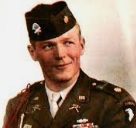Lancaster city Pennsylvania Wallpaper Store Near Me
Lancaster city Pennsylvania History & Facts
Lancaster, (Pennsylvania German: Lengeschder) also known as the Red Rose City (after the symbol of the House of Lancaster) is a city in South Central Pennsylvania, that serves as the seat of Pennsylvania's Lancaster County and is one of the oldest inland towns in the United States. With a population at the 2020 census of 58,039, it ranks 11th in population among Pennsylvania's municipalities. The Lancaster metropolitan area population is 507,766, making it the 104th-largest metropolitan area in the U.S. and second-largest in the South Central Pennsylvania area.
The city's primary industries include healthcare, tourism, public administration, manufacturing, and both professional and semi-professional services. Lancaster is best known for being the hub of Pennsylvania's Amish Country.

Originally called Hickory Town, the city was renamed after the English city of Lancaster by native John Wright. Its symbol, the red rose, is from the House of Lancaster. Lancaster was part of the 1681 Penn's Woods Charter of William Penn, and was laid out by James Hamilton in 1734. It was incorporated as a borough in 1742 and incorporated as a city in 1818.
During the American Revolution, Lancaster was the capital of the United States for one day at the Court House (built 1739, destroyed by fire in 1784 and rebuilt before relocating to current Lancaster County Courthouse in 1852; original site is now the Soldiers & Sailors Monument at Penn Square c. 1874), on September 27, 1777, after the Continental Congress fled Philadelphia, which had been captured by the British. The revolutionary government then moved still farther away to York, Pennsylvania.
Lancaster was capital of Pennsylvania from 1799 to 1812 with State Capital meeting at the Court House (built 1784 and demolished 1852 and now site of Soldiers & Sailors Monument at Penn Square), after which the capital was moved to Harrisburg.
U.S. census reports show that, from 1800 to 1900, Lancaster ranked within the nation's top 100 most populous urban areas.
In 1851, the current Lancaster County Prison - known locally as Lancaster Castle - was built in the city, but shares no visual similarities with the Lancaster Castle in England. The prison remains in use, and was used for public hangings until 1912. It replaced a 1737 structure on a different site.
Lancaster is located at 40°02'23" North, 76°18'16" West (40.039860, −76.304366), and is 368 feet (112 m) above sea level in the Piedmont region of Pennsylvania.
The city is located about 34 miles (55 km) southeast of Harrisburg, 70 miles (110 km) west of Philadelphia, 55 miles (89 km) north-northeast of Baltimore and 87 miles (140 km) northeast of Washington, D.C.
The nearest towns and boroughs are Millersville (4.0 miles), Willow Street (4.8 miles), East Petersburg (5.3 miles), Lititz (7.9 miles), Landisville (8.6 miles), Mountville (8.8 miles), Rothsville (8.9 miles), and Leola (8.9 miles).
According to the United States Census Bureau, the city has a total area of 7.4 square miles (19 km2), of which, 7.4 square miles (19 km2) of it is land and 0.14% is water.
Famous Peoples From Lancaster city Pennsylvania
Richard Winters
Richard Davis Winters (January 21, 1918 – January 2, 2011) was an officer of the United States Army and a decorated war veteran. He is best known for having commanded Easy Company of the 2nd Battalion, 506th Parachute Infantry Regiment, part of the 101st Airborne Division, during World War II. He was eventually promoted to major and put in command of the 2nd Battalion.

As a first lieutenant, Winters parachuted into Normandy in the early hours of D-Day, June 6, 1944, and later fought across France, the Netherlands, Belgium, and eventually Germany. After the German surrender in May 1945, he left the 506th and was stationed in France, where senior officers were needed to oversee the return home. In 1951, during the Korean War, Winters was recalled to the Army from the inactive list and briefly served as a regimental planning and training officer on staff at Fort Dix, New Jersey. After volunteering and completing training to become a Ranger, Winters was issued orders for deployment and was preparing to depart for Korea, but instead left the Army under a provision that allowed officers who had served in World War II but had been inactive since to resign their commission.
Winters was discharged from the Army and returned to civilian life, working first in New Jersey and later in Pennsylvania, where he set up his own company selling chocolate byproducts from The Hershey Company to producers of animal feed. He was a regular guest lecturer at the United States Military Academy at West Point until his retirement in 1997.
Winters has been featured within numerous books and was portrayed by English actor Damian Lewis in the 2001 HBO mini-series Band of Brothers.
We also serve Philadelphia city.
Contact Us
PD&G Wallcover Inc.
Call Us: 949-487-9261
Email: deb@pdgwallcover.com
Commercial Wallcovering & Installation

Commercial Wallcovering is not simply creating pleasing aesthetics. Paint also provides a protective finish...
Residential Wallcovering & Installation

We offer proffessional wallpapering services for residential homes. Deb is available to help you purchase...
Contact Us
PD&G Wallcover Inc.
Call Us: 949-487-9261
Email: deb@pdgwallcover.com
Why Us
- Dependable services
- 25 + years Experience
- FREE wallcovering consultations
- Free estimates
- Extremely Professional
- Friendly customer service
- Competitive Pricing
- Most reliable
- Wallpaper Simulator
Contact Us
PD&G Wallcover Inc.
Call Us: 949-487-9261
Email: deb@pdgwallcover.com







